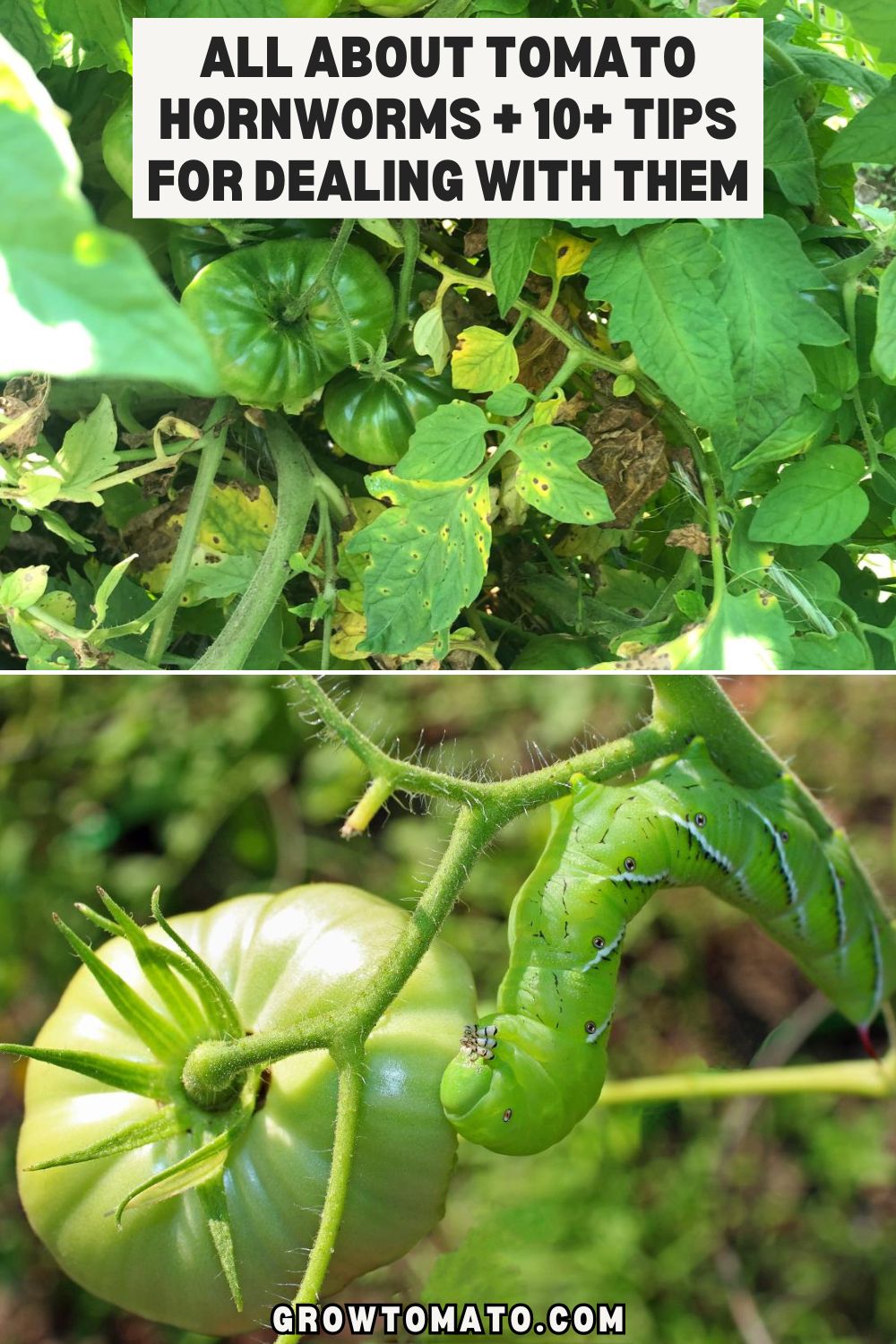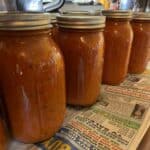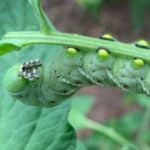Tomato hornworms are one of the more common pests that attack tomato plants. They can be a serious problem in the home tomato garden that damages plants and sometimes the fruit, too.
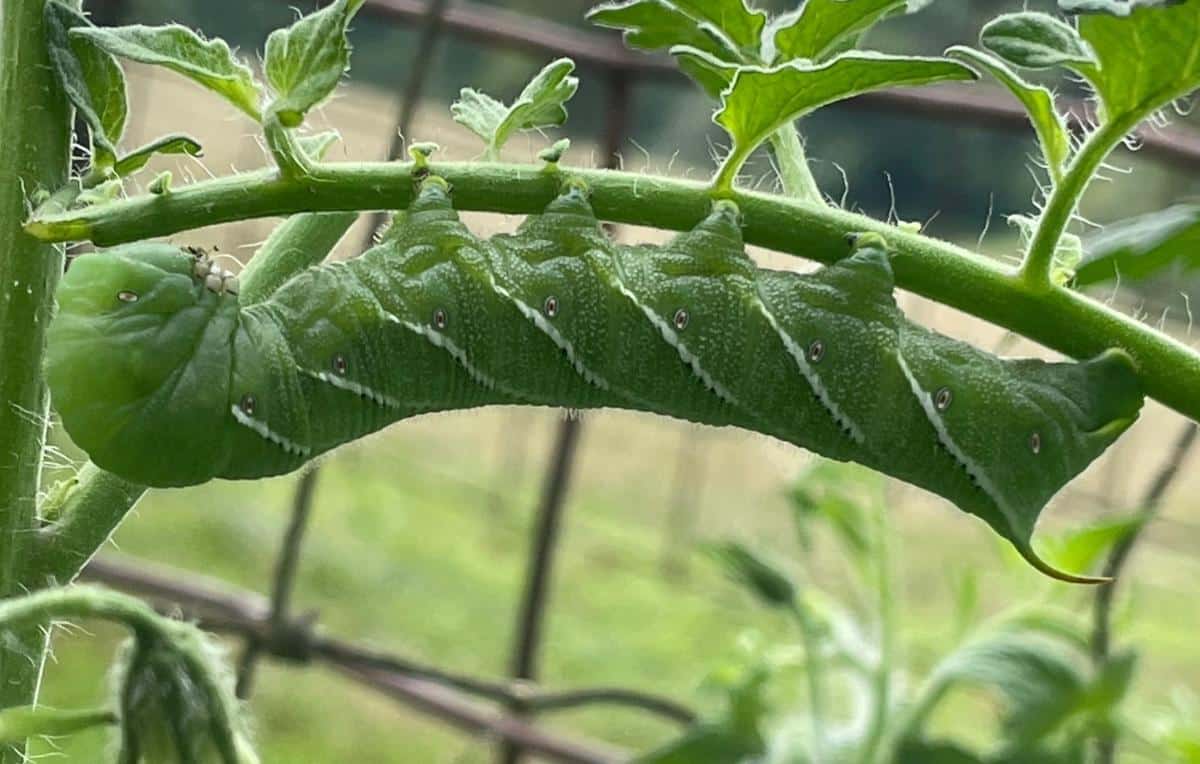
If you grow tomatoes, the odds are that you will have hornworms at some point. You’ll want to know what to do about them.
Jump to:
- A Big Worm that Does Big Damage
- A small problem that quickly becomes a big one
- The damage hornworms do
- Hard to find and then it feels like they ate your plant overnight!
- Other plants that hornworms infest
- A fairly localized problem
- Identifying and Finding Hornworms in Your Tomato Patch
- 1. Identify them
- 2. Know how to find tomato hornworms
- 3. Try to catch them small
- Signs You Have Hornworms in Your Tomatoes
- Hornworm Removal and Control Tips
- 4. Hand picking
- 5. Sprays and Insecticides
- When You Should NOT Kill a Tomato Hornworm
- Weed Control Helps
- Tilling Helps Break the Lifecycle of Hornworms
A Big Worm that Does Big Damage
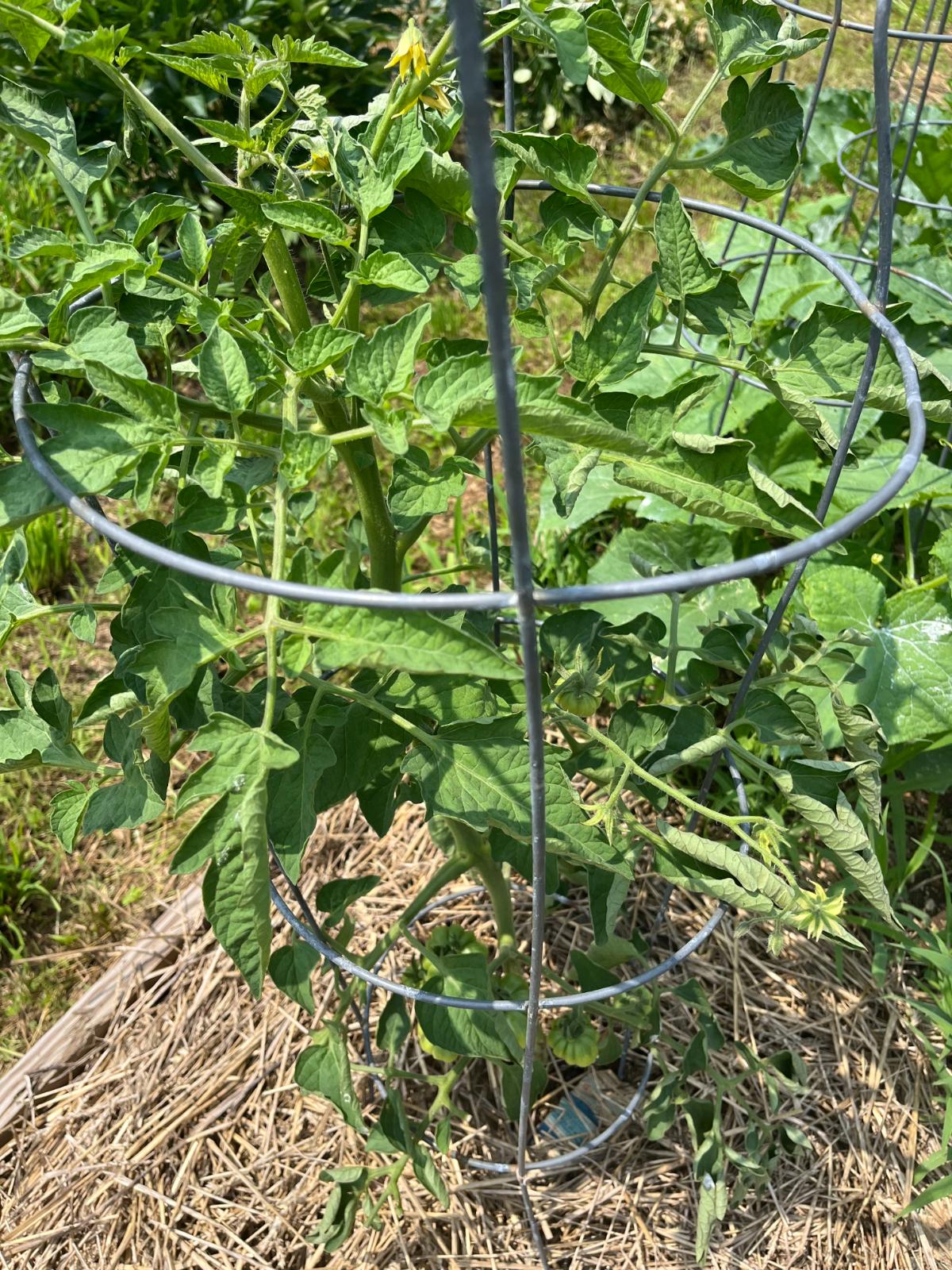
There are actually two types of hornworms that infest tomatoes. One is the tomato hornworm (Manduca quinquemaculata), and the other is the tobacco hornworm (Manduca sexta).
They are very similar, with only minor differences in their markings. One has one more set of white slashes on its body, and the color of the “horn” on the rear end of the caterpillar will be red or blue-black. That is about the extent of the difference between the two.
Effectively, when talking about prevention and control, most people generalize and say “tomato hornworm” even if they really have tobacco hornworms because there is hardly any difference, and the impact and control are the same either way.
You may even have both in your garden at the same time.
A small problem that quickly becomes a big one
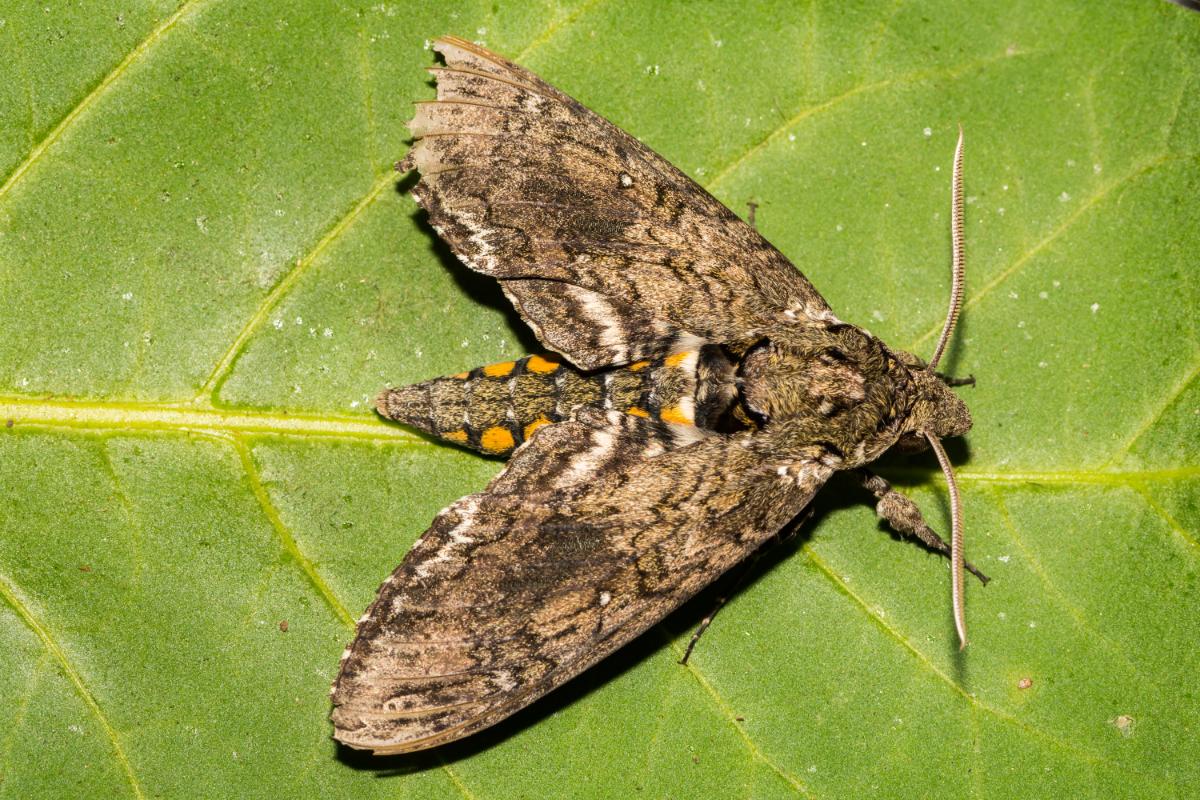
Hornworms are the larval stage of hawk moths. The moths themselves are considered helpful pollinators, sometimes mistaken for hummingbirds because of their fast flight, hovering, and nectar collection.
This makes it a bit of a question whether to kill the caterpillars or not, but on tomato plants and some other valued home garden and commercial crops, the caterpillars can do great damage.
Some people will choose instead to pull off the hornworms and move them to a host weed. There are a few other types of plants that hornworms will feed on; they eat plants in the nightshade family.
But then, you have to consider, too, that if you let the hornworms live in or near your garden, there will be a new generation of adults that will restart the lifecycle and breed more hornworms for you to deal with.
Hornworms typically have two generations in one season, so it’s best to deal with the first generation as soon as possible to reduce the impact of a larger second generation.
The damage hornworms do
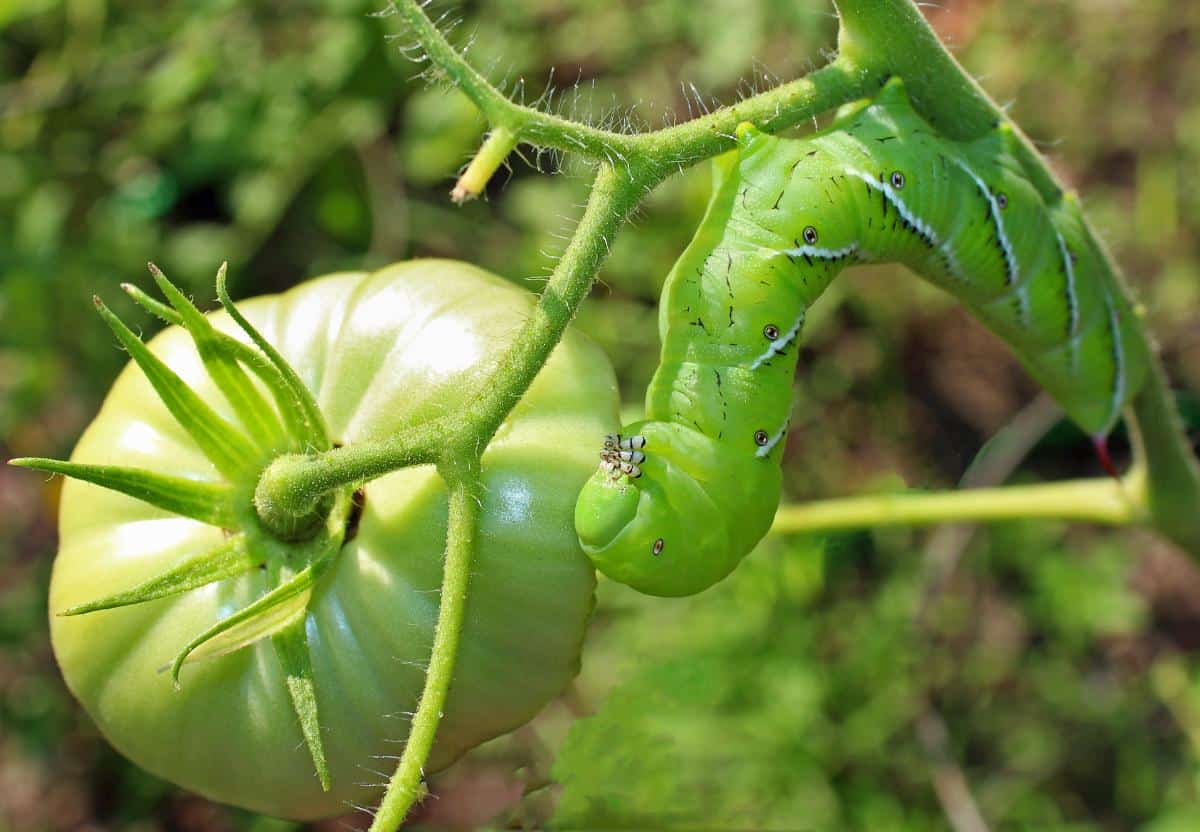
The damage to garden plants and vegetables is done by the caterpillars – the hornworms. The moths lay their eggs on the upper leaves of the host plant (in this case, tomatoes), then the eggs hatch, and the caterpillars begin feeding.
Read: eating your tomato plants!
Hornworms eat as much as four times their body weight per day. They eat mostly tomato leaves (foliage) when on tomato plants, but they will also take large bites from the green tomatoes.
On small varieties and developing fruit, the caterpillars can eat half or more of a tomato. Sometimes, a bite or two will only cause scarring, but it usually results in the ruining of the fruit, and often, chewed fruits end up rotting on the vine.
These caterpillars will continue to eat the plant for about a month until they drop off to pupate into the adult moths.
That’s a month of a caterpillar eating four times its body weight every day! A meal that multiplies daily!!
Hard to find and then it feels like they ate your plant overnight!

Considering that hornworms, though they may start small, grow to be about the size of a human finger (up to four inches!), you can see the potential for damage to your tomatoes (and other garden plants, too).
You probably won’t notice this damage when the eggs first hatch and the hornworms are small, but as they grow, you will start to see a lot of foliage loss and fruit damage.
Hornworms can completely skeletonize a tomato plant or other host plant.
It often appears as if this happened overnight, but it is more the fact that the hornworms started small and did little damage, and now those large older caterpillars are eating much more.
A few hornworms might not ruin your tomato patch, but if you have a heavy infestation, you could have a big problem.
Other plants that hornworms infest

One good thing about hornworms is that they are specific to certain host plants. Namely, solanaceous plants in the nightshade family.
Why is this good? Because it means the hornworms won’t run over your entire garden – they will stay on select types of plants (preferring tomatoes above the others).
If you have hawkmoths and/or hornworms, you may find them in
- Tomatoes (any variety)
- Tobacco
- Peppers
- Eggplant
- Potatoes
You may find them on the following weeds, too. Note that if you have these weeds and decide to move the worms, this is a good place to take them to:
- Jimsonweed
- Horse nettle
- Nightshade
Tomatoes are their favorite plant, though, which is why hornworms are better known as tomato infesters.
A fairly localized problem

If there is a bright spot about having tomato hornworms in your garden, it is that they remain fairly localized.
In other words, they won’t travel far from where their egg was laid and where they hatched.
They will simply continue to follow the food and chew all the leaves and sometimes green and red, ripe tomatoes in their path.
But they won’t travel all over your garden to do it.
The adult moths, however, can lay on any host plant in or near your garden. So, if it seems like the hornworms are moving around, it’s really that eggs were laid in many places on several different plants.
Identifying and Finding Hornworms in Your Tomato Patch
One of the difficult things about hornworms is that they have excellent camouflage. They are basically tomato plant colored and can be very hard to see, especially when they are young.
As the caterpillars grow, they will become quite large and the damage and feces become obvious, but by this point they have often done and are doing a lot of damage.
The first step in controlling or eliminating tomato hornworms is to know what to look for.
1. Identify them

First, learn what tomato hornworms look like.
As young, the caterpillars are white or light yellow. As they grow, they are tomato-plant green with diagonal white slashes on their sides.
Hornworms have a thorn-like curved spike on the top of the back end. It is either red or black. It looks lethal but is really harmless to a human.
2. Know how to find tomato hornworms
The next thing you need to know is how to find the hornworms so you can deal with them.
See below for signs of hornworm damage. You will almost always find the damage before you ever see a single hornworm. By the time you see obvious signs of damage, they have probably been there for a couple of weeks.
The hornworms, especially when large, are visible to the naked eye if you can find where they are feeding on your plant.
Look for the freshest droppings, newest leaf damage, or freshest bites in tomatoes, and then start searching for the worm in that area.
One of the best ways to find tomato hornworms is to go out to your tomato patch at night with a blacklight. Hornworms will glow green or white under a blacklight. A UV blacklight is most effective.
You only need an inexpensive blacklight flashlight.
It is recommended that you look for hornworms twice a week from July through August.
3. Try to catch them small
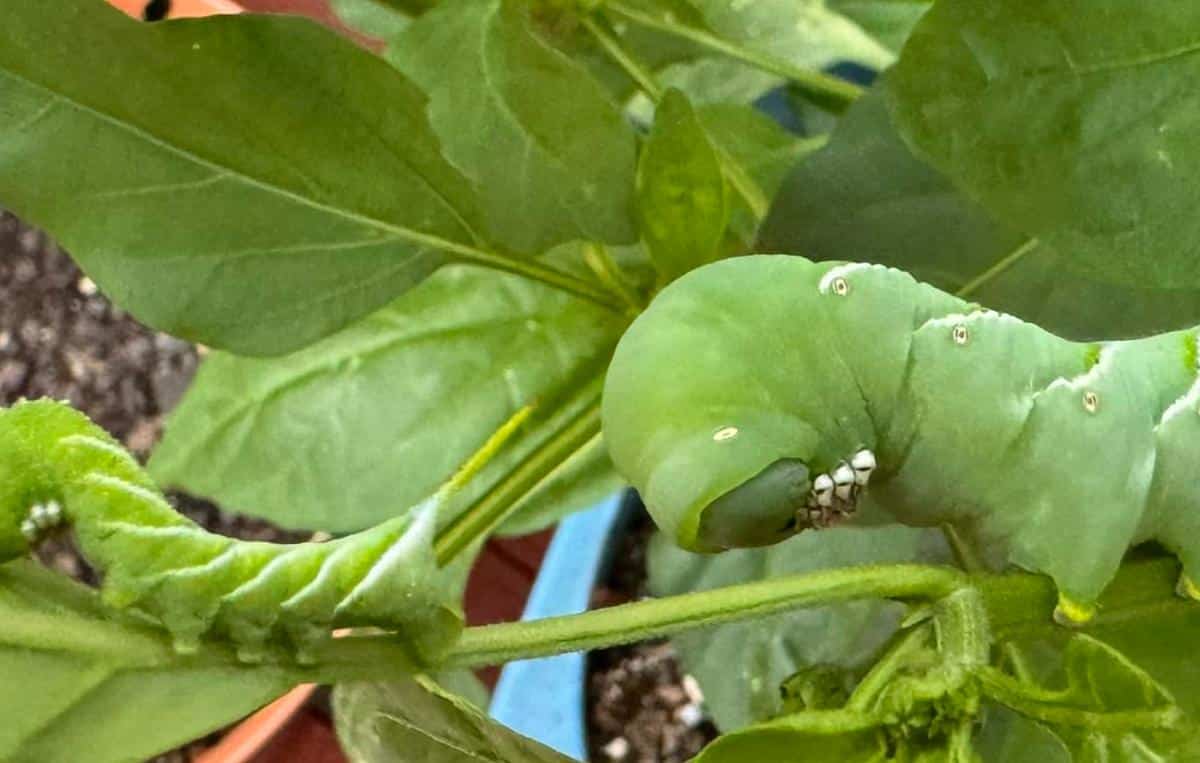
The earlier you catch tomato hornworms, the better. The best yet is if you can find and remove or treat the eggs, but that is often very difficult to do.
It is hard to find the caterpillars when they’re small, but as soon as you spot them, get rid of them. They only eat more and do more damage by the day.
Signs You Have Hornworms in Your Tomatoes
Hornworms are tough to find in the early stages and become easier to detect as they grow.
In the beginning, you will be hard-pressed to see the eggs or the small worms. They blend in exceedingly well.
In fact, even when the hornworms are big, they can be hard to find. They’re about exactly the color of the plant and you can be looking practically straight at them and not see them in the light of the day.
You are more likely to see the signs they leave behind. These include:
- Leaves with large chew marks on them
- Chewing will usually be from the edge of the leaf in or around the perimeter (but they may leave bites anywhere on the leaf – they just seem to like to work from the outside in)
- Feces (hornworm poop!) are often the first thing you’ll notice
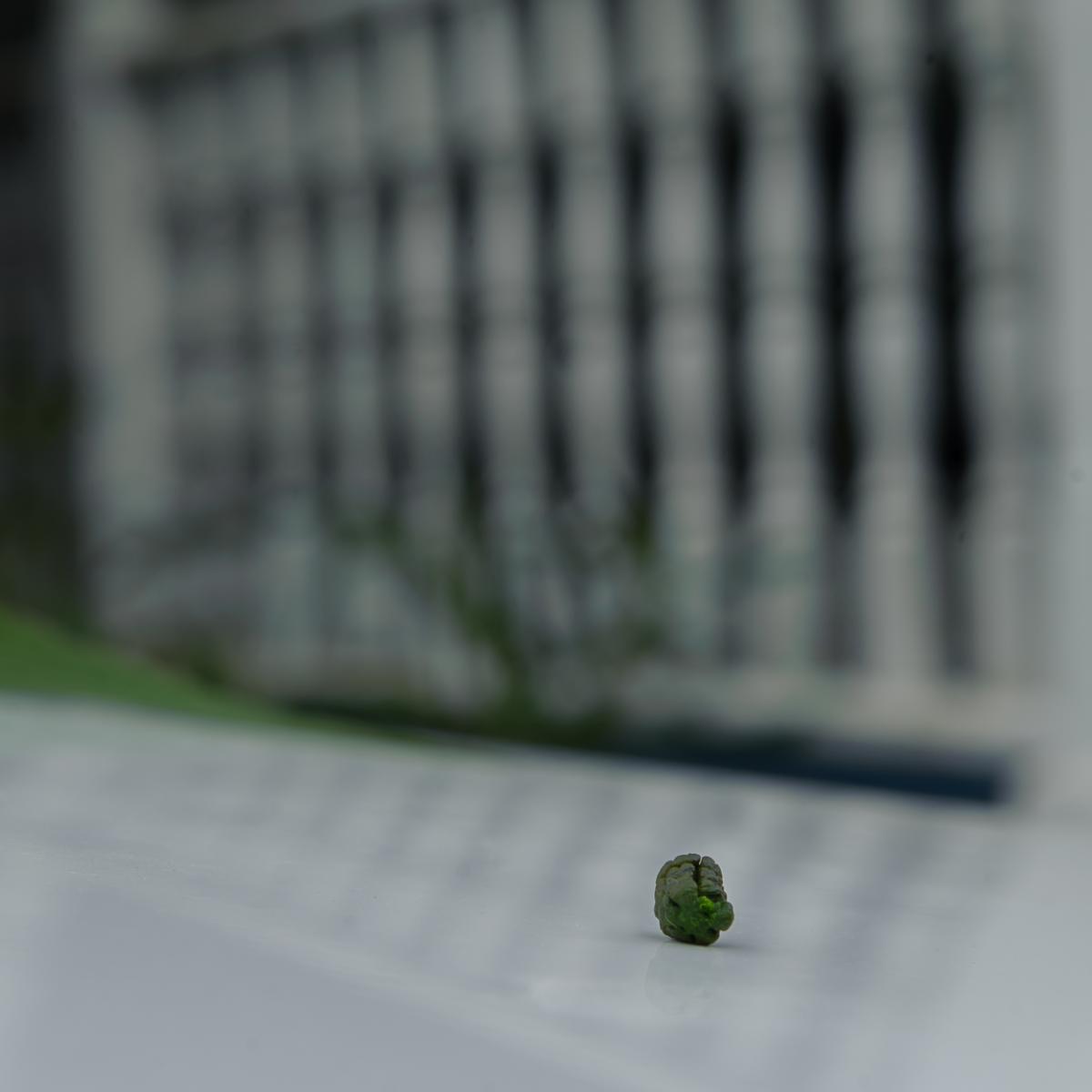
- If you see relatively large (for a bug) cylinder-shaped pellets that are fresh green (like the color of the leaves) or dark brown or black, those are hornworm droppings
- Brighter green droppings tell you they are fresh, so it’s a good place to start looking for the worms
- If you listen carefully, you might even hear large hornworms chewing away
- Bites and holes chewed into tomatoes (usually into the green or underripe fruit) are often from hornworms
- You may find entire sections of a plant (or whole plants if it’s gone on for a while) that are basically stem skeletons with all the leaves completely chewed off
Hornworm Removal and Control Tips
4. Hand picking

No one really wants to think about touching a hornworm, but hand-picking the worms is really the most effective. As long as you can find them well enough.
They won’t bite or harm you, but their feet are very good at holding on and feel weird in your hand. You may want to wear gloves.
You can also use a pair of tweezers to pull the worms off the plant without touching them.
After you take them off, you can feed the caterpillars to poultry like chickens and ducks if you have them, or you can just drop them into a jar with soapy water, which will kill the worms.
5. Sprays and Insecticides
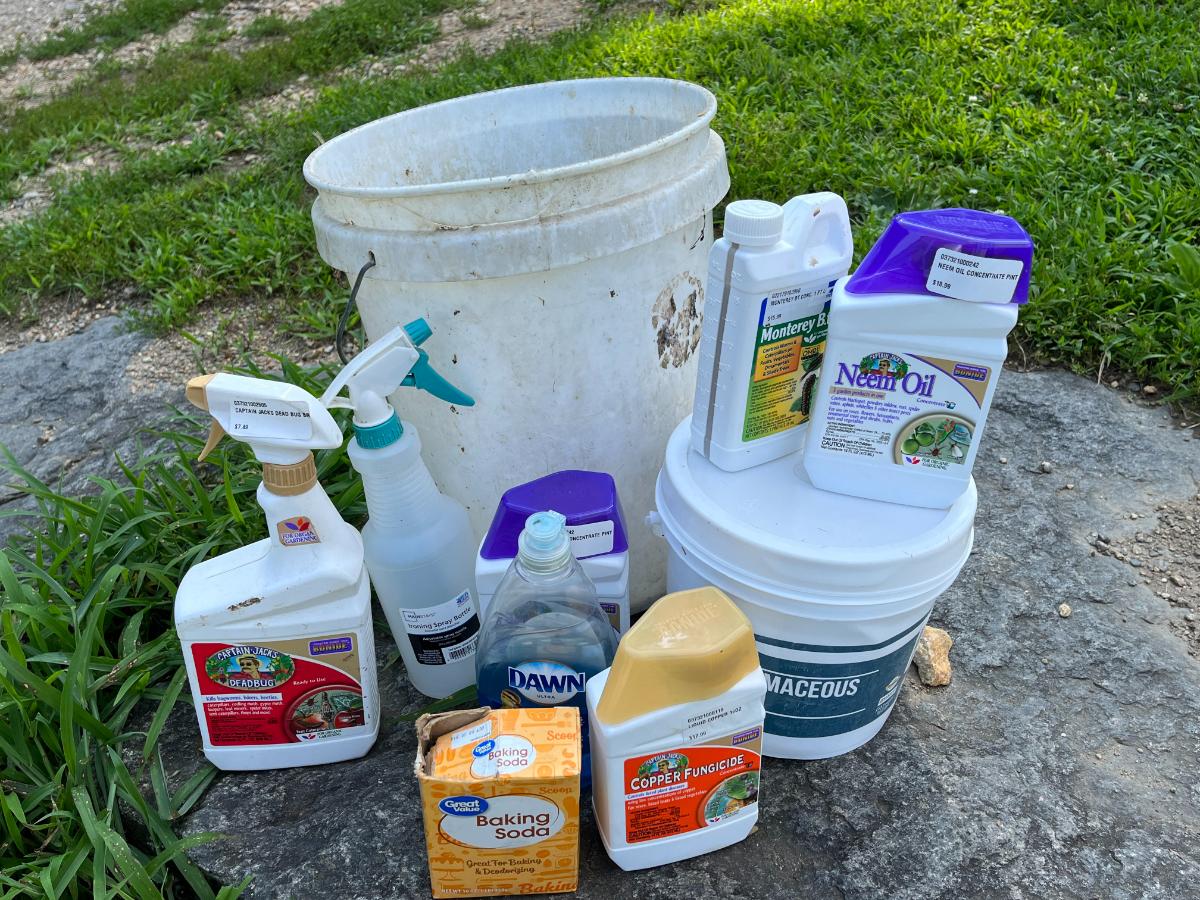
Experts often recommend hand-picking first because hornworms are so localized that they often don’t need widespread spraying to control them.
Also, sprays and insecticides work well on young caterpillars and eggs, but they don’t work as well on large hornworms – so the earlier, the better. You might find that by the time the hornworms are large enough to detect, biological insecticides may be less effective.
If you do have a widespread problem or choose to go the insecticidal route, here are some products you can use:
- Insecticidal soap (whether purchased or homemade/DIY). Insecticidal soap must come in contact with the hornworm to work. You can spot-spray on just the caterpillars that you see.
- Spinosad. Spinosad is a natural bacteria used to make a spray that works as an insecticide on many types of insects, including tomato hornworms. It needs to come in contact with the worms to work. Spot spraying individuals works well. It is an organic insecticide and one that is easy on many beneficial insects and may have little to no effect on them (read the label for more details and specific insects it harms or doesn’t harm).
- Bacillus Thuringiensis (Bt). Bt is a naturally occurring bacterium that targets worms, caterpillars, and similar pests. Buy Bt that is specifically targeted for worms and caterpillars. It will kill tomato hornworms (and works on a variety of other worm and caterpillar-type garden pests). Bt, like Spinosad, works when hornworms eat the sprayed plant. It is quite specific to targeting larval caterpillar-type pests, so it is harmless to bees and beneficial beetles, lacewings, and pollinators. This is a good option if you can’t locate the hornworms.
When You Should NOT Kill a Tomato Hornworm

Did you know?
There is actually a time when it is best NOT to kill tomato hornworms!
This is aside from any decisions you make about whether or not to kill the worms or move them and let them live to become pollinating hawkmoths.
If you see hornworms with a mass of white, rounded, spiky protrusions on their backs, standing straight up (or mostly so), leave them!
These odd growths are the cocoons of braconid wasps, a parasitic wasp that lays its eggs on hornworms.
When the eggs hatch, the wasp larva feeds on the insides of the hornworm. Then, they form the white cocoons on the hornworm’s body until they turn into wasps.
When ready, they will hatch from the cocoons, killing the worm, and then look for more hornworms to parasitize.
Therefore, if you have hornworms with wasp cocoons, you do far more to control the hornworms if you let that caterpillar live and feed and hatch new wasps.
Yes, that caterpillar will feed and do some damage, but the many wasps it spawns will control so many more hornworms. Ultimately, it’s a good trade.
Weed Control Helps

It helps to control the weeds near your tomatoes and in the rest of your garden. Some weeds are solanaceous and can attract the moths that lay the hornworm eggs.
These can be host plants, and they can also share hornworms if they are close enough for the caterpillars to crawl from one plant to the other.
Good weed control also supports your tomato plants better, without pressure from weeds and competition for resources. Strong, healthy plants are better able to outgrow minimal hornworm populations and rebound from damage done.
Tilling Helps Break the Lifecycle of Hornworms
No-till practices are becoming more and more popular in home gardens. Gardeners have differing practices and opinions, which is fine, but it’s worth know that if you do till your tomato patch at the end of the season, you can seriously reduce your hornworm problem.
Tomato hornworms overwinter as pupae. Caterpillars burrow down into the soil, form a cocoon, and stay there until spring emergence.
Tilling can kill up to 90% of your future hornworm population. That’s huge control!
If you have a serious to severe hornworm problem, plan to till.
If you don’t want to till the whole garden area, you can just till the tomato patch and immediate surrounding area, along with other plant areas that may have been impacted (such as pepper or eggplant rows).
The overwintering larvae will drop from the tomato plants and burrow in the area of the tomato patch or place where they were feeding, so you’ll know where to till to control them.
We can be honest about the fact that hornworms in tomato patches can be quite creepy, but fortunately, they can also be controlled through non-invasive, non-toxic means. All in all, tomato hornworms are one of the easier garden pests to control.
